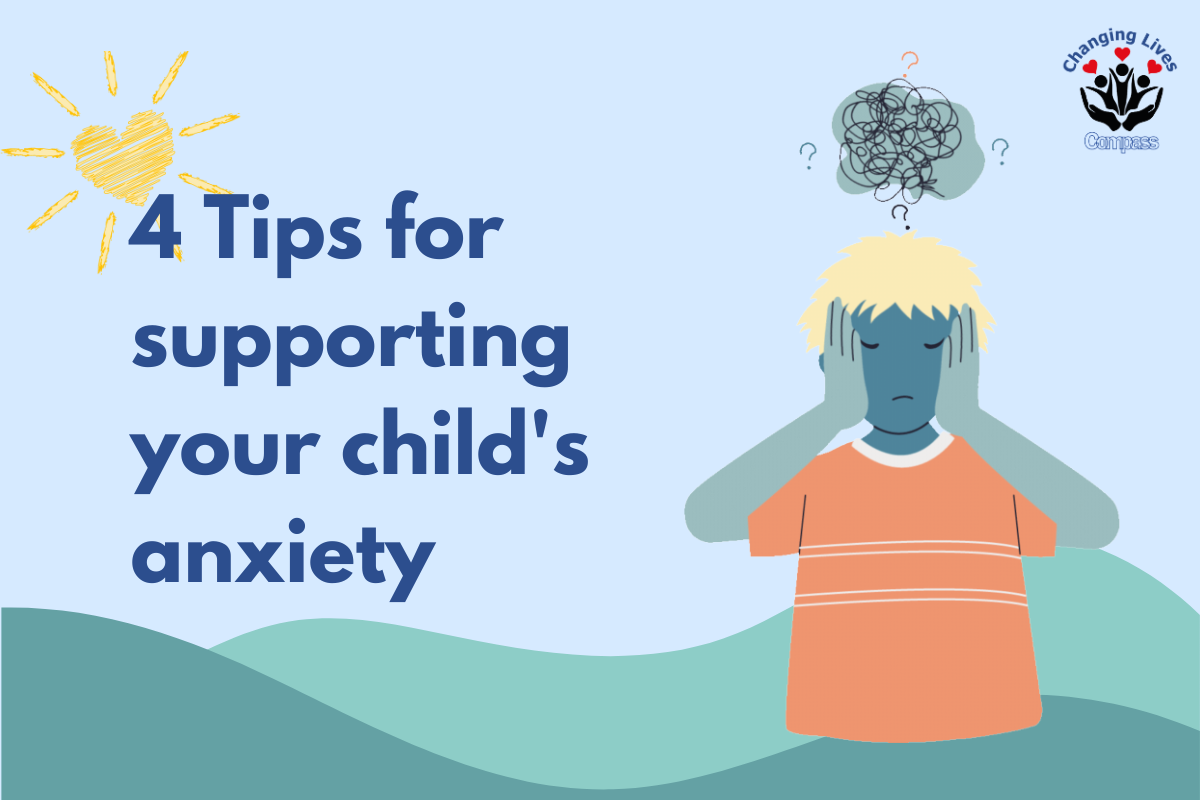
Worries, emotions and anxiety are normal experiences that everyone has at some point during their lives.
As parents and carers, it is important to be able to recognise the signs of worry and anxiety, and how to support your child through any difficult emotions. When your child is feeling anxious, they may be feeling frightened, worried or agitated. During these moments, it is important to help our children feel calm and to create a safe space.
Here are 4 strategies that can help when your child is feeling anxious:
1. Breathing Exercises
Breathing exercises help to calm our nervous system, helping us to feel less anxious.
Ask your child put hold out their hand. With their other hand, trace each finger up as they breathe in, and trace each finger down as they breathe out. Repeat this as many times as necessary.
2. Make a “Calm Box”
A Calm Box can be a valuable tool to provide a range of sensory objects/activities to help soothe and calm your child’s emotions and senses, helping them to feel more relaxed.
Using an old box, fill it with tactile and meaningful items that can help your child settle, focus and reduce feelings of worry or sadness to help regulate their emotions.
3. Worry Time
It can be helpful to plan some worry time for each day, no longer than 20 minutes, to give your child an opportunity to organise and offload any worries that have felt that day. Try to plan your worry time for the same time each day. It should be a time when your child is most focussed and engaged.
4. Grounding Techniques
Grounding techniques can help children to refocus attention to the present moment and distract them from anxious feelings.
When your child starts to feel worried, guide them through the following steps:
Name 5 things you can see.
4 things you can hear.
3 things you can touch.
2 things you can smell.
1 thing you can taste.
You may want to demonstrate the activity yourself to begin with. Your child can say these out loud or in their head if they prefer!
Remember, strategies take time!
It is important to remember that everyone is different, and it can take time to work with your child and figure out what helps them best when they are feeling anxious. Like a physical muscle, the brain gets stronger the more it is used. If the strategies are practiced daily, they can become a lifelong skill that equips your child to tackle any emotion or obstacle they may face in the future!
If you liked some of the techniques we’ve shared here, you might also be interested in our Mindfulness article.
Back to Online Resources
